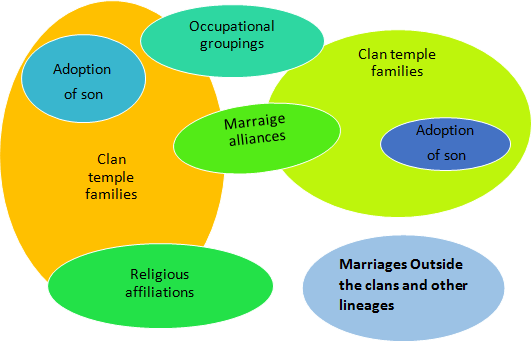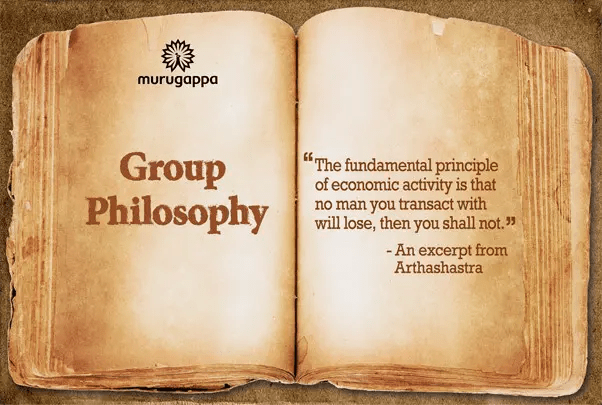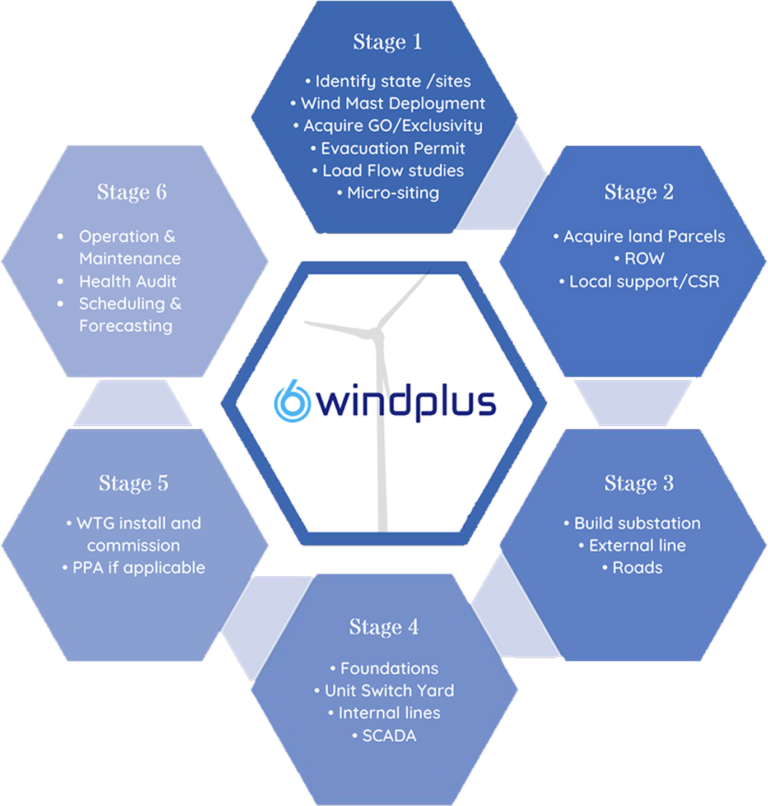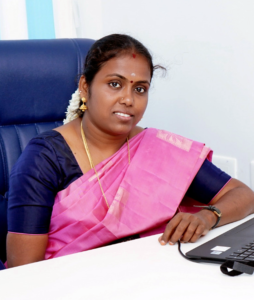Nattukottai Chettiars -Business Practices and Perspectives
Introduction:
Commonly called as Chettiars, this unusual community of South India, hails from the interiors of Tamilnadu. The land they come from is called as “Chettinadu” –meaning “the land of chettys”. Chetty is the term commonly used for the vaisya caste in south India similar to the Banias in North India. The Nattukottai chettiars stand out for their adventurous spirit of entrepreneurship, as the history mentions them as Maritime traders. They acquired huge wealth and fame during 1800- 1940s by venturing into the Southeast Asian countries as money lenders and traders. Their indigenous banking system, combined with organizing and accounting skills that were compared with the European bankers, made their centuries -1800s and half of 1900s- full of money. Frugal, spiritual and simple chettiars found their way in the development areas of Burma, Malaysia, Singapore and Ceylon, out of which, Burma was their important headquarters for banking operations in the past century. The Business Practices and the kinship network is the base of their success story and that was studied thoroughly in this research work. The Economical, Political and Socio-cultural perspectives are brought out in the broad sense of business.
Places of Business
The population of Chettiars was around 10,000 in 1896, and in 1921 consisted of about 40,000 Chettiars. By 1930, it was 50,000 and It was predicted to be 80,000 during 1966.The recent population status is not clear because there is no caste census data available. With such a narrow area as origin, during 1850 – 1940s, their business connections were wider. Their business areas apart from Madras presidency were in Burma, Ceylon, the Federated Malay States, the Straits Settlements and Cochin China. They have been overseas principally in Burma, and also in Ceylon, Malaya, Singapore and accumulated wealth. The major countries they adventured for conducting business ventures were
Burma (Myanmar)
Ceylon (Srilanka)
Thailand
Saigon (South Vietnam)
Federal states of Malaya (Malaysia)
Singapore
Sumatra (Indonesia)
Mauritius and
South Africa
Characteristics
During their thriving period in 1900s, their individualism and asceticism in economic activity and the success hitherto was ensured by,
Peculiar joint as well as independent family system
Agency system in Business
Close knit community network
Chettiar Associations
Sharp intuitive acumen for finance
Natural frugality
Great strong spirituality
Simplicity
Objectives
- To study the Nattukottai Chettiars Business Practices from the Historical period to the present date
- To study and reiterate the social and cultural systems that complemented their business, then and now
- To understand the philanthropic and spiritual characteristics of the community
- To understand the various centre points of interest and boundary of the community at different time periods
Business Practices
Chettiar business firms that operated during the colonial era excelled in their own way in many modalities of operations. They created business empires with sheer business skills, trust on kinship, organized proficiency and book keeping and insulated banking services.
“A Nattukottai Chetty is born to business and for business alone”
The families and their firms were interdependent and thus created a complex network of business operations layered with various practices. The main business of Chettiars was money lending. They avoided speculative loans and were ready to grant loans to any business or reason with a proper security. Expected harvest or the agricultural land provided the necessary security and that’s how the farmers became the principal clients for the chettiar firms.
Apart from money lending, issue and discount of hundis, accepting deposits, honouring cheques, discount usance hundis, money changing, accepting documents and valuables for safe deposit were some of the merchant banking services provided by the chettiars. Some chettiars were involved in conducting trade of cotton, rice, gold and gems too. The chettiars being the pure business men to the core, looks at the importance of trust-based business transactions, which is the core base of their business.
Book keeping methods
The accounting methods of chettiar Bankers are commended worldwide by scholars and authors who have studied on the banking practices of chettiars.
The following are the major books kept by the chettiar business men
- Journal book – Asal Kurippu
- Ledger – Peredu
- Outstanding dues book – Paakkipustakam
- Hundi register book – undial anuppu varavu
- Voucher file – Kacchathu or kaisaatru book
- Waste Book –chittai kurippu
Education

In 18th century, Chettiars, being fervent saivaties from the day known to them and others, have made it a mandatory part of their life to know and recite God Siva’s hymns of Thevaram and Thiruvasagam. They didn’t believe in the education of schools. They preferred practical hands- on training than theoretical practice. Simple teaching of math knowledge combined with the long and strict apprenticeship training under their own caste member, who often is a relative, made them efficient enough to start a business of their own. The importance of education was spread through various magazines and some of the rich chettiars set examples by sending their children to America for further studies. This paved way for transformation of schools and building up of new modern schools in the chettinadu area. It is worth mentioning that later on, some Universities and many colleges in Tamilnadu were built and run by Chettiars.
Banking Business
Indian Bank and Indian Overseas bank were the major factor for the unstoppable growth of this group in various industrial sectors.

Indian bank
In 1906 Arbuthnots, a leading European business house of Madras collapsed and paved way for Indian merchants to utilize the opportunity to come up with a new Banking initiative. The crashing out of three best-known British business houses including the Arbuthnots was the worst ever financial crisis Madras has suffered. Sir George Arbuthnot, a prominent figure and member of Madras Legislative Council was not able to hold up the firm despite his influential white race and numerous deposits, due to his ill-planned investments.
The closing of Arbuthnots created a vacuum among the banking area, particularly the English companies facing a sudden crunch in the absence of the credible firm. The popular notion accepted by many people was that the Chettiars who are already well versed with the merchant banking and money lending has started the Indian Bank, run by Indians for Indians, in the perfect time of bankruptcy of Arbuthnots.
Formation of Indian Bank in 1907 is the reflection of the differences between European and colonial Madras’s capitalists, as a result of the rise of swadeshism. The chettiars important in the development of the bank are Rm.M.St. Chidambaram Chettiar (one of the First directors of the Bank), S.Rm.M.Ramasamy Chettiar,who was the elder brother of Rajah Sir Annamlai chettiar (also one of the first directors), Rajah Sir Annamalai Chettiar and PMA Muthiah Chettiar. The Indian Bank was started with a paid-up capital of Rs. 10 lakhs in 1907 and went up to Rs.17,75,000 within one year, of which two-thirds subscribed by chettiars. Based on the facts and figures supplied by M.S.Natarajan (1934), during 1930, the total deposits were around Rs.1,92,56,000. The branches of Indian Bank were opened in the later years, in all the South East Asian Countries where the Chettiar business houses were operating.
This in turn helped the Chettiars accumulate more wealth, particularly the Rajah Sir Group, as the control over the Bank paved way for continuous flow of funds. The bank had the participation of both M.Ct family and Rajah Sir family till 1950. Then the Bank was controlled by the Rajah Sir family till its nationalization in 1969.
Indian Overseas Bank
M.Ct.M.Chidambaram Chettiar, son of M.Ct. Muthiah Chettiar founded the Indian Overseas Bank on February 10, 1937.His father was the nephew of Rajah Sir Annamalai Chettiar. IOB commenced operations in Madras, Karaikudi and Rangoon simultaneously In 1938 a branch was opened in Kuala Lumpur, Malaysia. In another 10 years, the bank saw a tremendous growth and opened up branches in many of the important and capital cities of many countries. The priority of the bank was to help the Indians overseas and help the industrial sector of the country. IOB was nationalized in 1969.

Bank of Madura

Bank of Madura was founded in 1943 by the “Kalaithanthai” Karumuthu Thiagarajan Chettiar. Given with his experience and stubbornness for success, the bank grew faster and acquired goodwill and popularity. After 16 years of inception, it became a scheduled bank in 1959.153 A principled Thiagarajan Chettiar refused to open overseas branches even after the RBI clearance to do so.
The Bank of Madura, known for the service and efficiency of employees, merged with ICICI bank in 2001. The 58 years old bank carved out its place for being a traditionally focused banking strategies based on social objectives.
Other challenging industries
The major players in the chettiar community namely Rajah Sir group, Karumuthu group and AMM group conducted their new business ventures and manufacturing industries according to the unique tradition of independent yet joint family system and hence the business companies were controlled under one umbrella and owned by different sons of the family. It’s only the Rajah Sir family that operated under three different heads, two of his sons Rajah Sir Muthiah and M.A. Chidambaram, and the third one by his nephew M.Ct. Muthiah and his son M.Ct. Chidambaram Chettiar.

Yetwhen the Rajah Sir group have the clear demarcation of names owning the companies, AMM group and Karumuthu group had the same banner for all the companies. Rm. Alagappa Chettiarcannot be called as family group,hence, was not mentioned in the comparison table. But, his business ventures included an array of different options like textile mills in Kerala, Insurance Companies in Calcutta, Hotels in Bombay, Cinema theatres in Madras, a stock broking company and to top it all up, a private airline. It is the basic concept of the chettiars “multiplying” the money that has lead to this massive fund circulation.
Important Elements of Chettiar Society

CASE STUDY
Murugappa Group -AMM Murugappa ChettiarSource information https://www.murugappa.com/

The late chairman AMM Arunachalam best summed up the Group’s philosophy in community service:
“The Murugappa Group believes not only in value-added business but also in discharging its responsibilities to various sections of society and in providing opportunities to learn, contribute, advance; recognise and reward initiative, innovativeness and creativity. They believe in not only making their customers delighted but the community around them also delighted, by established service-oriented philanthropic institutions in the field of education and Medicare. AMM Murugappa Chettiar group of companies (Murugappa Group) are carrying their philanthropic activities for generations. The Murugappa group follows the community tradition of “Magamai”, spending a part of profit towards community and social development. One percentage of profit after Tax is forwarded to AMM Foundation, the initiative of the group’s NGO activities.
AMM foundation runs two higher secondary schools (government aided), one in Chennai and another in Chettinad. A polytechnic college serves for the suburban Chennai students. In the Health care area, AMM Hospital, from 1924 is to be noted for the service it is rendering to the rural people in Pallathur, Chettinad. Apart from that, Sir Ivan Stedford Hospital, a Hospital with all modern equipments for surgery, is a boon to the suburban Chennai people, for whom Government Hospital with all the amenities is a little far away. Valliammai Hospital in Kanyakumari district, Tamilnadu is another contribution from this group to the society. Murugappa Group focuses its Corporate Social Responsibility also towards Research and development. Murugappa Chettiar Research Centre (MCRC) is another bench mark of Murugappa Group in the rural development sector, designing simple technologies for the use of local artisans.
It is worth noting here that all of the outcomes of charity are not named after AM.MurugappaChettiar and his family, as usually seen in other cases. But a hospital is named after an Englishman -Sir Ivan Stedford, to recognize his donations and to appreciate his partnership with the group. Similarly, the school run by the trust is named after Sir Ramaswami Mudaliar, who was a noble man and guiding spirit for Murugappa Chettiar and was instrumental in introducing the joint ventures with foreign companies for the group’s initial Tube Investments Ventures. This unique characteristic is seen as a gesture of nobility as the action speaks more than name. To conclude the topic, it would be apt to quote the words from a century old book “Southern India: Its History, People, Commerce, and Industrial Resources” “The spending of lakhs and lakhs of rupees year after year on the renovation of time-worn temples and in the construction of new ones, and the revival and maintenance of institutions which have had their origin in prehistoric times, have, from time immemorial, been the exclusive privilege of this community”
Conclusion
Business is an occupation for survival, if anyone is fortunate to make money out of it, the self-less nature should be turned on, and that is what is understood from the above perspectives. The chettiar community values are following
- Religiousness and spirituality are well balanced with modern life styles and treated as the basic string to keep the community intact.
- The importance of education is well understood and thrust is given to that area
- It is well understood that the altruist activities know no boundaries. As per the ancient tamil literature hymn “yaadhum oore yaavarum keelir” (meaning “all the places are same and equal) Chettiars philanthropy is wide spread beyond frontiers. They have treated even the places of business in foreign countries with respect and it is testified by the temples built over there.
Apart from these, a common characteristic of the community to learn is the treatment of success and failure. They stand back together again after every major problem and disasters -from the Tsunami hit Puharto the dry land, from dry land to swampy forests and wet lands in Southeast Asia, and from there to various places in the world now –the unity counts. They earned a lot, and lost a lot in many incidents of history, but still they stood back. When this was discussed in an interview session with a group of Chettiars, a chettiar aged 87, said in tamil “dharmam talai kakkum”, Meaning “charity will save the head”, which seems to be true in their case.
Wealth creation, multiplication and accumulation –all is fine only if the stakeholders of the society are part of the beneficiaries to the accumulated wealth. The belongingness to the country and the rights of being the citizen is in no way smaller and no ethnic minorities have dominated for such a long period in a foreign land.
To conclude, it is our duty to visit our past and to do so, documenting our past as history, without any bias and prejudice is the first step. Revisiting the path of our forefathers enrich us with knowledge and lessons, to continue our journey more successfully. This study is a small contribution to take the first step. It is proved from the study that; a band of brothers can create a community and a land and culture of their own. With unity, the members of the community can establish business empires in far off places and can uplift their society with social responsibility. It is the need of the hour for the Indian business communities to repeat the success story of agricultural credit in India.
Research:
- Book by PUSHPA SUNDAR, BUSINESS & COMMUNITY (Evolution of CSR in INDIA)
- Business Practices and Perspectives – Thesis (Internal) Department of Management Studies, Pondicherry University









